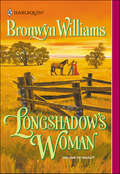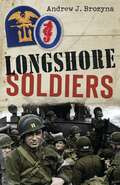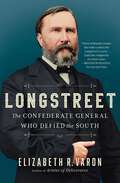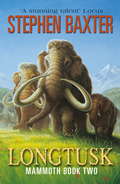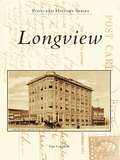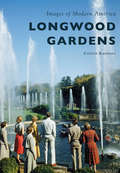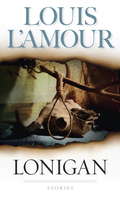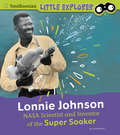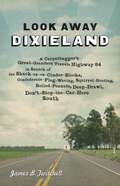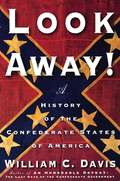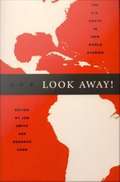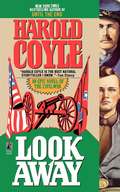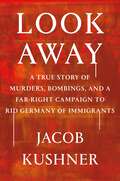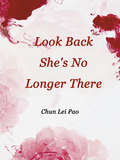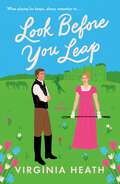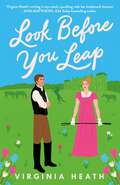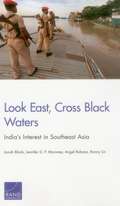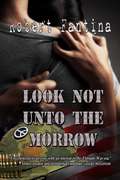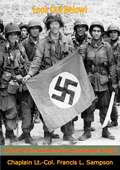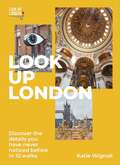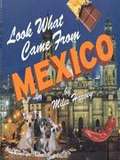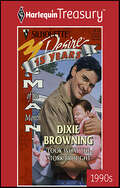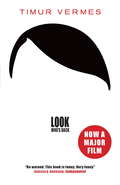- Table View
- List View
Longshadow's Woman
by Bronwyn WilliamsJonah Longshadow had never walked an easy road. Now the hands of destiny had yanked him from a white man's prison and set him down on a hardscrabble farm, paired with a woman whose quiet courage and gentle kindness filled him with dreams that a man like him had no business dreaming.....Two dollars' worth of trouble-that's what Carrie Adams had probably bought herself when she paid Jonah Longshadow's freedom. But she needed strong hands to help her tend her land, and this mountain of a man seemed made to order. The only thing she hadn't counted on was her heart entering into the bargain.
Longshore Soldiers
by Andrew BrozynaLongshore Soldiers chronicles the wartime experiences of port battalion veterans, part of the US Army's Transportation Corps, responsible for ensuring military were delivered to the front line. The author, Andrew Brozyna, traces the stories of the veterans from training in the US, to supplying the beaches of Normandy, dock work in Antwerp, supply for the British at El Alamein and finally to deactivation. Longshore Soldiers offers a compelling narrative, packed with first-hand accounts and personal histories, of an overlooked aspect of the Second World War. The author examines the logistics of the European theatre and how these veterans kept the Allied armies moving as they marched into the Reich.
Longstreet: The Confederate General Who Defied the South
by Elizabeth VaronFinalist, Los Angeles Times Book Prize for Biography American Battlefield Trust Prize for History Finalist A &“compelling portrait&” (Jon Meacham, Pulitzer Prize–winning author) of the controversial Confederate general who later embraced Reconstruction and became an outcast in the South. It was the most remarkable political about-face in American history. During the Civil War, General James Longstreet fought tenaciously for the Confederacy. He was alongside Lee at Gettysburg (and counseled him not to order the ill-fated attacks on entrenched Union forces there). He won a major Confederate victory at Chickamauga and was seriously wounded during a later battle. After the war, Longstreet moved to New Orleans, where he dramatically changed course. He supported Black voting and joined the newly elected, integrated postwar government in Louisiana. When white supremacists took up arms to oust that government, Longstreet, leading the interracial state militia, did battle against former Confederates. His defiance ignited a firestorm of controversy, as white Southerners branded him a race traitor and blamed him retroactively for the South&’s defeat in the Civil War. Although he was one of the highest-ranking Confederate generals, Longstreet has never been commemorated with statues or other memorials in the South because of his postwar actions in rejecting the Lost Cause mythology and urging racial reconciliation. He is being discovered in the new age of racial reckoning as &“one of the most enduringly relevant voices in American history&” (The Wall Street Journal). This is the first authoritative biography in decades and the first that &“brilliantly creates the wider context for Longstreet&’s career&” (The New York Times).
Longtusk
by Stephen BaxterTakes the story of the mammoths back into prehistory; 16,000 B.C.It is a time when the mammoths face the vicious intrusions into their world of the Lost - mankind. And it is up to Longtusk, the only Bull to feature in the great story cycle of the mammoths to lead them away to a new land, safe from the lost.
Longtusk
by Stephen BaxterTakes the story of the mammoths back into prehistory; 16,000 B.C.It is a time when the mammoths face the vicious intrusions into their world of the Lost - mankind. And it is up to Longtusk, the only Bull to feature in the great story cycle of the mammoths to lead them away to a new land, safe from the lost.
Longview (Postcard History)
by Van CraddockSituated in the East Texas Piney Woods, Longview was established in 1870 when O. H. Methvin deeded land to the Southern Pacific to build a railroad station. The village became the county seat of Gregg County in 1873 and quickly prospered as a rail, cotton, and manufacturing center. The discovery of the East Texas Oil Field in 1930-1931 revealed that Longview sat in the middle of the world's largest pool of petroleum. The boom had begun! Today Longview is home to almost 80,000 residents. The city that bills itself as "Real East Texas" is a manufacturing, medical, and educational center and home to such events as the Great Texas Balloon Race and AlleyFest arts festival.
Longwood Gardens
by Colvin RandallThirty miles west of Philadelphia in the historic Brandywine Valley of southeastern Pennsylvania blooms Longwood Gardens, one of the world�s great horticultural centers. The original arboretum was planted beginning about 1800 by a Quaker family named Peirce. Industrialist Pierre Samuel du Pont (1870�1954) bought the property in 1906 to save its historic trees and make it a place where he could entertain his friends and the public. For three decades, he created an astounding collection of gardens, conservatories, and fountains and a perfect setting for the performing arts. Since du Pont�s death in 1954, Longwood Gardens has continued to evolve from a private estate to a very public garden, with renowned designers creating new landscapes to enhance the enjoyment of more than a million guests each year.
Lonigan: Stories
by Louis L'AmourIn this exciting collection of short stories, Louis L&’Amour, the legendary voice of the American West, celebrates the unique breed of men who worked the great cattle ranches. Men like Dan Regan, who refused to surrender when trouble came . . . Con Fargo, who would fight for what was his—despite the odds . . . Rowdy Horn, a small-time rancher with big-time dreams . . . Tandy Thayer, too loyal to forget a friend . . . Bill Carey, who might have fallen low, but not low enough to let the likes of Tabat Ryerson ride off with a woman like Jane Conway . . . and in the classic title story, Danny Lonigan, a hard rider who faced a group of rustlers without fear—or mercy.
Lonnie Johnson: NASA Scientist and Inventor of the Super Soaker (Little Inventor)
by Lucia RaatmaWhy is Lonnie Johnson important? He invented the Super Soaker! Readers follow his journey from a NASA engineer working on missions to Jupiter and Saturn to becoming the inventor of one of the most popular toys in the United States. This story of hard work is filled with engaging text and colorful images, all reviewed by Smithsonian experts.
Look Away Dixieland: A Carpetbagger's Great-Grandson Travels Highway 84 in Search of the Shack-up-on-Cinder-Blocks, Confederate-Flag-Waving, Squirrel-Hunting, Boiled-Peanuts, Deep-Drawl, Don't-Stop-the-Car-Here South
by James B. TwitchellAs a boy, James Twitchell heard stories about his ancestors in Louisiana and even played with his great-grandfather's Civil War sword, but he never appreciated the state and the events that influenced a pivotal chapter in his family history. His great-grandfather, Marshall Harvey Twitchell, a carpetbagger from Vermont, had settled in upstate Louisiana during Reconstruction, married a local girl, and encountered much success until a fateful day in August 1874. The dramatic story of the elder Twitchell's life and near assassination fuels the author's pursuit of his family's history and a true understanding of the South.In Look Away, Dixieland, Vermont-native Twitchell sets out from his current home inFlorida on the inauguration day of America's first black president to find the "real" South and to try to understand the truth about his illustrious ancestor. He travels in an RV from Georgia's Okefenokee Swamp across Alabama and Mississippi to Coushatta, Louisiana. As he drives through the heart of Dixie, Twitchell sorts through the prejudices he learned from his northern rearing. In searching for the culture he had held at arm's length for so long, he tours small-town southern life -- in campgrounds, cotton gins, churches, country fairs, and squirrel dog kennels -- and uncovers some fundamental truths along the way. Notably, he discovers that prejudices of race, class, and ideology are not limited by geography. As one man from Georgia mockingly summed up North versus South stereotypes, "Y'all are rude and we're stupid."Unexpectedly, Twitchell also uncovers facts about his great-grandfather and sheds new light on his family's past. An enlightening, humorous, and refreshingly honest search, Look Away, Dixieland reveals some of the differences and similarities that ultimately define us as a nation.
Look Away!
by William C. DavisWilliam C. Davis, one of America's best Civil War historians, here offers a definitive portrait of the Confederacy unlike any that has come before. Drawing on decades of writing and research among an unprecedented number of archives, Look Away! tells the story of the Confederate States of America not simply as a military saga (although it is that), but rather as a full portrait of a society and incipient nation. The first history of the Confederacy in decades, the culmination of a great scholar's career, Look Away! combines politics, economics, and social history to set a new standard for its subject. Previous histories have focused on familiar commanders such as Robert E. Lee and Stonewall Jackson, but Davis's canvas is much broader. From firebrand politicians like Robert Barnwell Rhett and William L. Yancey, who pushed for secession long before the public supported it; to Dr. Samuel Cartwright, who persuaded many Southerners of the natural inferiority of their slaves; to the women of Richmond, who rioted over bread shortages in 1863, Davis presents a rich new face of the Confederate nation. He recounts familiar stories of battles won and lost, but also little-known economic stories of a desperate government that socialized the salt industry, home-front stories of the rangers and marauders who preyed on their fellow Confederates, and an account of the steady breakdown of law, culminating in near anarchy in some states. Never has the Confederacy been so vividly brought to life as a full society, riven with political and economic conflicts beneath its more loudly publicized military battles. Davis's astonishingly thorough primary research has ranged across the 800-odd newspapers that were in operation during the war, but also across the personal papers of over a hundred Southern leaders and ordinary citizens. He quotes from letters and diaries throughout the narrative, revealing the Confederacy through the words of the Confederates themselves. Like any society, especially in the early stages of nation-building and the devastating stages of warfare, the Confederacy was not one thing but many things to many people. One thing, however, was shared by all: the belief that the South offered a necessary evolution of American democracy. Look Away! offers a dramatic and definitive account of one of America's most searing episodes.
Look Away!: The U. S. South in New World Studies
by Jon Smith Deborah CohnLook Away! considers the U. S. South in relation to Latin America and the Caribbean. Given that some of the major characteristics that mark the South as exceptional within the United States--including the legacies of a plantation economy and slave trade--are common to most of the Americas, Look Away! points to postcolonial studies as perhaps the best perspective from which to comprehend the U. S. South. At the same time it shows how, as part of the United States, the South--both center and margin, victor and defeated, and empire and colony--complicates ideas of the postcolonial. The twenty-two essays in this comparative, interdisciplinary collection rethink southern U. S. identity, race, and the differences and commonalities between the cultural productions and imagined communities of the U. S. South and Latin America. Look Away! presents work by respected scholars in comparative literature, American studies, and Latin American studies. The contributors analyze how writers--including the Martinican Edouard Glissant, the Cuban-American Gustavo Prez Firmat, and the Trinidad-born, British V. S. Naipaul--have engaged with the southern United States. They explore William Faulkner's role in Latin American thought and consider his work in relation to that of Gabriel Garca Mrquez and Jorge Luis Borges. Many essays re-examine major topics in southern U. S. culture--such as race, slavery, slave resistance, and the legacies of the past--through the lens of postcolonial theory and postmodern geography. Others discuss the South in relation to the U. S. -Mexico border. Throughout the volume, the contributors consistently reconceptualize U. S. southern culture in a way that acknowledges its postcolonial status without diminishing its distinctiveness. Contributors. Jesse Alemn, Bob Brinkmeyer, Debra Cohen, Deborah Cohn, Michael Dash, Leigh Anne Duck, Wendy Faris, Earl Fitz, George Handley, Steve Hunsaker, Kirsten Silva Gruesz, Dane Johnson, Richard King, Jane Landers, John T. Matthews, Stephanie Merrim, Helen Oakley, Vincent Prez, John-Michael Rivera, Scott Romine, Jon Smith, Ilan Stavans, Philip Weinstein, Lois Parkinson Zamora
Look Away: A History of the Confederate States of America
by Harold CoyleThis Civil War saga from military novelist Coyle is about two brothers from New Jersey who find themselves on opposite sides of the war.
Look Away: A True Story of Murders, Bombings, and a Far-Right Campaign to Rid Germany of Immigrants
by Jacob KushnerA thrilling narrative investigation into the National Socialist Underground (NSU)—a German terror organization that targeted immigrants—and how a government failed to stop it. Not long after the Berlin Wall fell, three teenagers became friends in the East German town of Jena. It was a time of excitement, but also of deep uncertainty: some four million East Germans found themselves out of work. The friends began attending far-right rallies with people who called themselves National Socialists: Nazis. And, like the Hitler-led Nazis before them, they blamed minorities for their ills. From 2000 to 2011, they embarked on the most horrific string of white nationalist killings since the Holocaust. Their target: immigrants. Look Away follows Beate Zschäpe and her two accomplices—and sometimes lovers—as they became radicalized within Germany&’s far-right scene, escaped into hiding, and carried out their terrorist spree. Unable to believe that the brutal killings and bombings were being carried out by white Germans, police blamed—and sometimes framed—the immigrants instead. Readers meet Gamze Kubaşık, whose family emigrated from Turkey to seek safety, only to find themselves in the terrorists&’ sights. It also tracks Katharina König, an Antifa punk who would help expose the NSU and their accomplices to the world. A masterwork of reporting and storytelling, Look Away reveals how a group of young Germans carried out a shocking spree of white supremacist violence, and how a nation and its government ignored them until it was too late.
Look Back, She's No Longer There: Volume 1 (Volume 1 #1)
by Chun LeiPaoFrom the time he had saved her when she was young, she had regarded him as everything.To become the best sword in his hands, to pacify these mountains and rivers for him.He had overturned the world, ascended the throne, and given her the promise of a lifetime.As for her, she had been gifted to the vassal lord and would never again be reunited with him.Years later, he suddenly missed the woman who had fought for him in the world and made him more tea.Looking at each other from afar, she was already a mother.When she saw him again, in order to protect her husband's life, she committed suicide in front of him and fell off the platform.In this golden age, there was no longer a smile on her face. At that moment, he had gone mad …
Look Before You Leap: A Novel (Miss Prentice's Protegees)
by Virginia HeathIn this hilarious second installment of a Regency romance series, a single lord is forced to settle down...and when a houseparty brings a happy-go-lucky lady's companion his way, his grumpy heart is unexpectedly warmed.Nine years ago, Lord Guy Harrowby, Viscount Wennington, was publicly humiliated by a failed and reckless romantic gesture. Despite this, his mother clings to the promise he made her then: that she would have a house full of grandchildren by his thirtieth birthday. Still single, embittered, and swiftly approaching thirty, Guy's work is his life. In desperation, his mother blindsides Guy with a weeklong house party at his estate filled with annoying debutantes, all competing to be his wife.After failing as a governess, Lottie Travers is struggling as a lady’s companion. Raised in an all-male household, she’s developed habits that get her dismissed. Even after years of Miss Prentice’s teachings of how to be a lady, she climbs trees better than she embroiders and can’t resist riding horses astride, in breeches. But with the family farm in trouble, and her father now in dire need of her wages, she’s determined to conquer her wildness once and for all.Even with his home full of eligible women, there is only one who catches Guy’s eye—though he tries to deny it. For Lottie, succeeding in her new role proves difficult when the Wennington estate is filled with horses, and a spark ignites between her and the grumpy lord. Will they remain stuck in their ways, or learn that they may just be the perfect match?
Look Before You Leap: A brand-new hilarious and heartwarming Regency romp! (Miss Prentice’s Proteges)
by Virginia Heath'A refreshing array of dazzling wit, hidden depths, lip curling humour and heartmelting fun, in all its entangling intimacy!!'⭐ ⭐ ⭐ ⭐ ⭐ reader praise for the Merriwell Sisters series!'Virginia Heath's fun characters and situations will have you laughing out loud!' SABRINA JEFFRIES'Filled with fabulously British banter, wit, and heart' EVIE DUNMORE'Heath is carving a name for herself in historical rom-coms' BOOKLIST starred reviewLOOK BEFORE YOU LEAP is the second in a new Regency romp of a series from the author of the Merriwell Sisters series! In this hilarious historical rom-com, a single lord is forced to settle down...and when a houseparty brings a happy-go-lucky lady's companion his way, his grumpy heart is unexpectedly warmed.________________________Nine years ago, Lord Guy Harrowby was publicly humiliated by a failed romantic gesture. Now, with the clock ticking on a promise he made to his mother to make her a grandmother by his thirtieth birthday, Guy is horrified to see his incorrigible mother taking matters into her own hands: she's organised a week-long house party at his estate . . . with every debutante she can think of. Lottie Travers is not a very good lady's companion. Despite years of trying, she still climbs trees better than she embroiders, and would always rather be riding horses. But now, with her family's finances relying on her wages, she's determined to conquer her wildness once and for all. Overwhelmed with eligible women, there is only one who catches Guy's eye, no matter how hard he tries to deny it. For Lottie, succeeding in her job proves difficult when the Wennington estate is filled with horses and there is a definite spark between her and the grumpy lord. Neither of them is quite what the other expected, but could they in fact be the perfect match?________________________Readers LOVED the Merriwell Sisters!!'An utterly heartwarming and hilarious romp through regency England . . . Virginia Heath's new series is the perfect blend of humour and romance that Bridgerton fans will fall head over heels for' 5⭐ NetGalley review'A fresh, fun and a totally original take on the regency romance genre . . . the witty banter is brilliant and so entertaining! . . . I can't wait to read more from this author' 5⭐ NetGalley review'I absolutely loved this book . . . A historical romance with humour. Looking forward to the next book by Virginia Heath' 5⭐ NetGalley review'What a fun story! . . . Hugh and Minerva have fantastic chemistry, and they send up sparks every time they are on the page together . . . A great read all the way around!' 5⭐ NetGalley review'The first in a new series & boy what a starter, it had me hooked & giggling from the first page . . . If you want a humorous, entertaining often farcical yet romantic read look no further' 5⭐ NetGalley review'I loved, loved, loved this story!' 5⭐ NetGalley review
Look East, Cross Black Waters
by Angel Rabasa Jennifer D. Moroney Bonny Lin Jonah BlankIndia's core goals for Southeast Asia are in basic harmony with those of the United States, including regional stability, peaceful settlement of territorial disputes, and containment of radicalism Still, America should not expect India to enter any sort of alliance, nor join any coalition to balance against China, but should demonstrate strategic patience and willingness to cultivate a long-term relationship.
Look Not Unto The Morrow
by Robert FantinaIn "Look Not Unto the Morrow," innocence shattered and ultimate redemption are portrayed against the backdrop of the Vietnam War and the turbulent sixties. The story follows the lives of three young people as they experience love and war. Roger Gaines is the promising young college student, drafted into the army and traumatized by his experiences in basic training and Vietnam. Pam Wentworth is the loving girlfriend he leaves behind, who evolves from naive college student, to political activist, to radical anarchist. Michelle Healy is the young woman Roger meets when he returns home, who loves him unconditionally when he can no longer love himself.
Look Out Below!: A Story of the Airborne by a Paratrooper Padre
by Chaplain Lt.-Col. Francis L. SampsonFirst published in 1958, this book tells the spellbinding story of “one of the remarkable priests of God who leaped behind enemy lines and into the midst of combat with no weapon other than the sword of the spirit, no protection other than the shield of faith.“Here is the story of the airborne troopers told by the one who knew them best and with insights only a priest could possess.“It is sometimes humorous, sometimes tragic, often heroic, but always honest and inspiring as seen through the understanding and sympathetic eyes of the paratrooper padre.” (Lt.-Gen. Thomas F. Hickey)Richly illustrated throughout with photos.
Look Up London: Discover the details you have never noticed before in 10 walks
by Katie WignallA refreshing guide to discovering the hidden details of London with 10 fully guided walking routes from London's leading tour guide Look Up London. Have you ever noticed London's tiniest public sculpture? Or wondered why there are strange cone-shaped structures on the fanciest historic homes? Did you know that the Tower of London used to be a zoo, or about the now defunct London railway that transported over 200,000 people to their final resting place? These are just some of the fascinating details that Blue Badge Tourist guide Katie Wignall reveals in this absorbing guide to the secrets of London hidden in plain sight. Take a journey through London's rich past with these 10 fully guided walking routes and discover a whole world of incredible history hiding above your eye-line, just waiting to be spotted. From the saucy scandals of Covent Garden to stories of power and intrigue from the City, atmospheric pubs to hidden Roman remains, London is a city bursting with captivating stories which are etched into its very architecture. So, Look Up and discover a London you have never seen before.
Look Up London: Discover the details you have never noticed before in 10 walks
by Katie WignallA refreshing guide to discovering the hidden details of London with 10 fully guided walking routes from London's leading tour guide Look Up London. Have you ever noticed London's tiniest public sculpture? Or wondered why there are strange cone-shaped structures on the fanciest historic homes? Did you know that the Tower of London used to be a zoo, or about the now defunct London railway that transported over 200,000 people to their final resting place? These are just some of the fascinating details that Blue Badge Tourist guide Katie Wignall reveals in this absorbing guide to the secrets of London hidden in plain sight. Take a journey through London's rich past with these 10 fully guided walking routes and discover a whole world of incredible history hiding above your eye-line, just waiting to be spotted. From the saucy scandals of Covent Garden to stories of power and intrigue from the City, atmospheric pubs to hidden Roman remains, London is a city bursting with captivating stories which are etched into its very architecture. So, Look Up and discover a London you have never seen before.
Look What Came from Mexico
by Miles HarveyThis series meets National Curriculum Standards for: Social Studies: Culture Global Connections People, Places, & Environments
Look What the Stork Brought (Man of the Month)
by Dixie BrowningMR. DECEMBERInstant Father: Former detective Joe Dana had a weakness for beautiful women-not pudgy babies!Earth Mother: Sophie Bayard knew all about natural childbirth-she just didn't expect a handsome stranger to practically deliver her baby in a vegetable garden!Little Miss Fatcheeks: Could this tiny dynamo hook Sophie a husband?Joe planned to hightail it back to Texas once he retrieved an heirloom from the brand-new mother, but before this bachelor knew it, he was strutting around like the proud papa. Uh-oh! And now these designing women were trying to turn this nonmarrying man into Father of the Year!MAN OF THE MONTH: Beneath his tough exterior beats a tender heart.
Look Who's Back
by Timur VermesTHE SMASH-HIT HITLER SATIRE - MORE THAN 3 MILLION COPIES SOLD"A brilliant book" RUSSELL KANE "Brilliant and hilarious" KEN FOLLETTA box-office-hit film now available on NETFLIXA two-part BBC Radio 4 Dramatisation directed by and starring David Threlfall (Shameless)Berlin, Summer 2011. Adolf Hitler wakes up on a patch of open ground, alive and well. Things have changed - no Eva Braun, no Nazi party, no war. Hitler barely recognises his beloved Fatherland, filled with immigrants and run by a woman. People certainly recognise him, albeit as a flawless impersonator who refuses to break character. The unthinkable, the inevitable happens, and the ranting Hitler goes viral, becomes a YouTube star, gets his own T.V. show, and people begin to listen. But the Führer has another programme with even greater ambition - to set the country he finds a shambles back to rights. Look Who's Back stunned and then thrilled 1.5 million German readers with its fearless approach to the most taboo of subjects. Naive yet insightful, repellent yet strangely sympathetic, the revived Hitler unquestionably has a spring in his step.Translated from German by Jamie Bulloch
